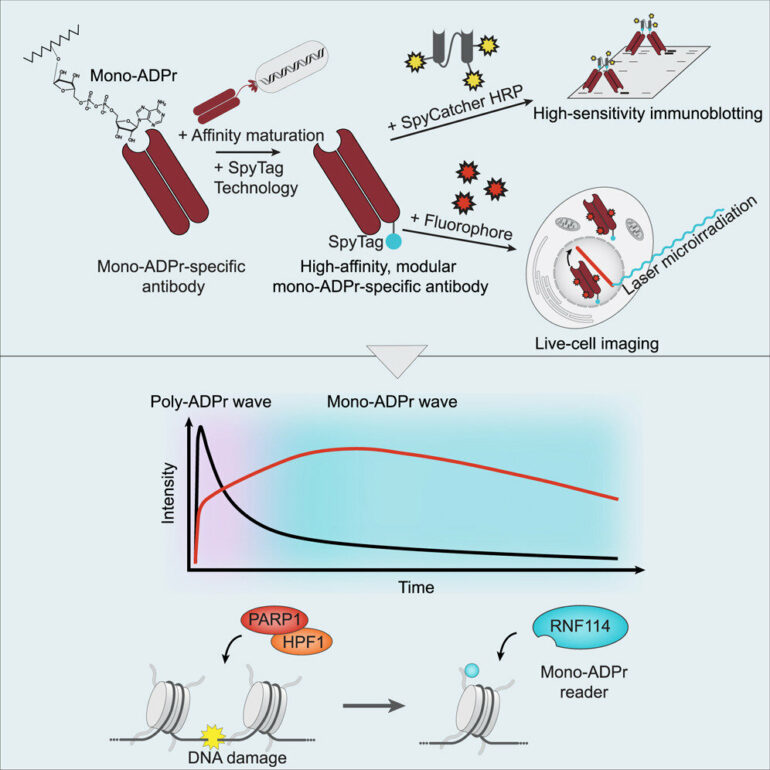Our DNA is constantly exposed to damaging factors that can lead to aging and age-related diseases such as cancer. PARP1 is an important enzyme that facilitates the response to DNA damage by attaching chemical groups called ADP-ribose to proteins. Published in Molecular Cell, a new study by the Matic group at the Max Planck Institute for the Biology of Ageing has discovered a second, slower wave of PARP1 activity that regulates DNA repair in a more gradual way.
This discovery sheds new light on the complex process of DNA repair and has practical implications for the development of cancer treatments.
Cells are constantly exposed to various DNA-damaging agents, such as UV radiation from the sun, chemicals and other environmental factors. Damage to DNA caused by these agents can accelerate the aging process and lead to age-related diseases such as cancer. It is therefore vital for cells to protect and repair their DNA.
PARP1 is an enzyme that plays a critical role in the DNA damage response. It catalyzes the post-translational modification of proteins by the addition of chemical groups called ADP-ribose. This modification creates a signaling pathway that recruits proteins to the site of DNA damage to facilitate the repair process.
Second wave
It was previously known that PARP1 responds rapidly to DNA damage by adding many ADP-ribose groups to a number of proteins at the sites of DNA damage. However, the researchers have now discovered a second and slower wave of PARP1 activity. During this second wave, PARP1 acts in concert with another protein to add single ADP-ribose groups. They also observed that these individual ADP-ribose units interact with other proteins and recruit them to the sites of DNA damage. This makes the response to damage more gradual and fine-tuned.
“It is very fascinating how this simple set of enzymes creates such a complex picture and such a fine-tuned process,” said Edoardo José Longarini, first author of the study. “This discovery was made possible by the development of advanced antibodies, which allowed us to identify this second wave of ADP ribosylation.”
Opening the door to new cancer treatments
The discovery of this second wave of PARP1 activity is an important step in understanding the complex process of DNA repair. Not only does it shed new light on the intricate workings of this important pathway, it also has practical implications for the development of cancer treatments.
PARP1 inhibitors are already being used in the clinic for cancer treatment, but this deeper understanding of the pathway opens up new opportunities for the development of new inhibitors.
More information:
Edoardo José Longarini et al, Modular antibodies reveal DNA damage-induced mono-ADP-ribosylation as a second wave of PARP1 signaling, Molecular Cell (2023). DOI: 10.1016/j.molcel.2023.03.027
Provided by
Max Planck Society
Citation:
How a single enzyme unleashes a complex DNA repair process (2023, April 28)



